
Everyone is busy, extremely busy. Marketers need to work smarter not harder. The ability to examine metrics is essential for marketers to better understand their audience, analyze how their strategy is working and prove return on investment (ROI).
Google Analytics
Google analytics is a web software that tracks website traffic and user behaviour when on your website. This is done by adding code to each page of your site enabling site metrics to be viewed within the google analytics dashboard and from there create personalised reports.
How can it help?
Firstly, being able to track the source of your website traffic is essential to ensuring your marketing tactics have a positive impact on your strategy.
Using that tracking information to understand the behaviour of your website users is critical in ensuring that you are generating content that meets their requirements and encourages them to take the desired action on your site.
So, what are the key metrics for the busy marketer?
Your key metrics are the main metric that you analyse in order to view the customer journey.

Audience
Google analytics provides data that can help you get a greater understanding of your website audience.
Analysis of the below metrics can help marketers understand whether their tactics are helping them to reach their target audience effectively.
Key tip: Analyse the data collected and compare to your organisation’s digital personas to see if they match.
Analysing your metrics consistently over a set period: a week/bi-weekly/monthly will provide you with data and actionable insights into the impact of your marketing.
Key metrics about your audience include:
- Users - The total number of visitors to your website in a given period of time.
- New users - Someone visiting your website that has never done so before.
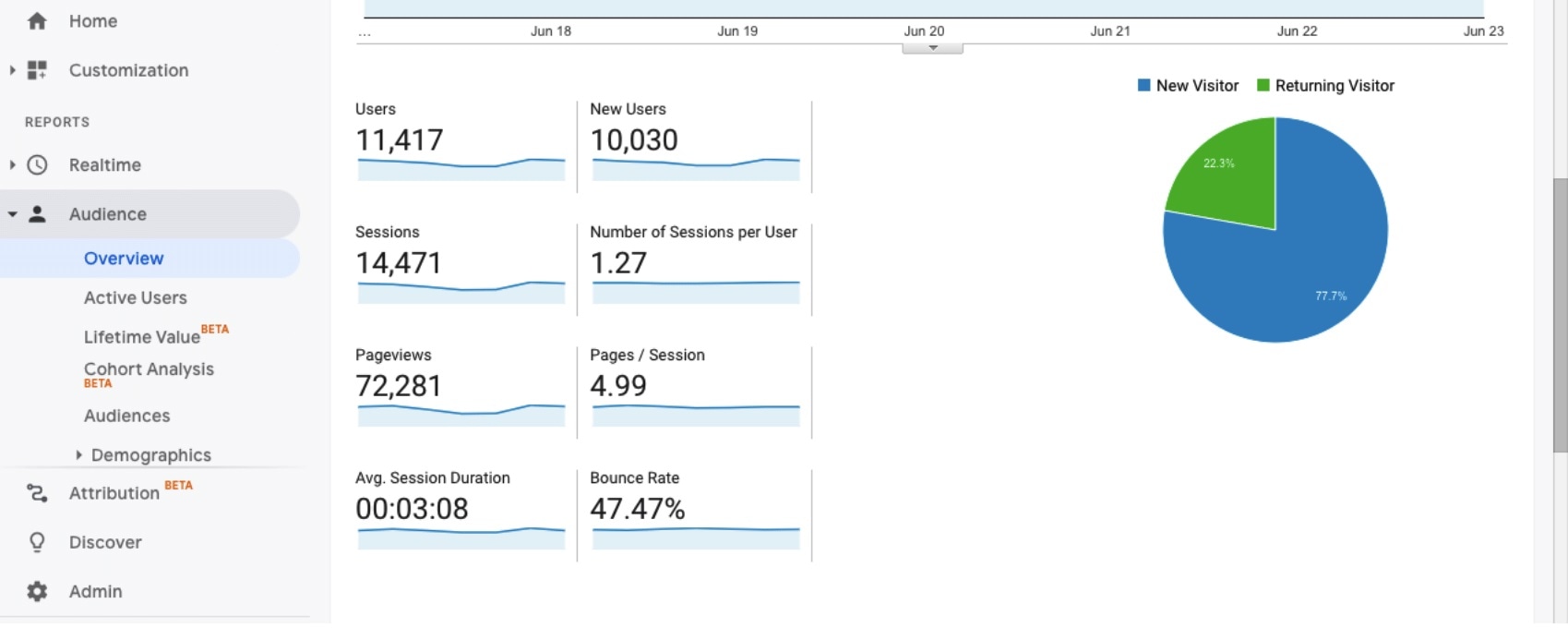
- Type of device used – There are already over 3 billion worldwide smartphone users and this is expected to grow by 100’s of millions in the next 5 years. It is of course critically important in 2020 that your website is optimised for mobile usage. Monitoring the % of mobile / tablet / desktop users is useful when focusing on your content creation, website layout and user experience.
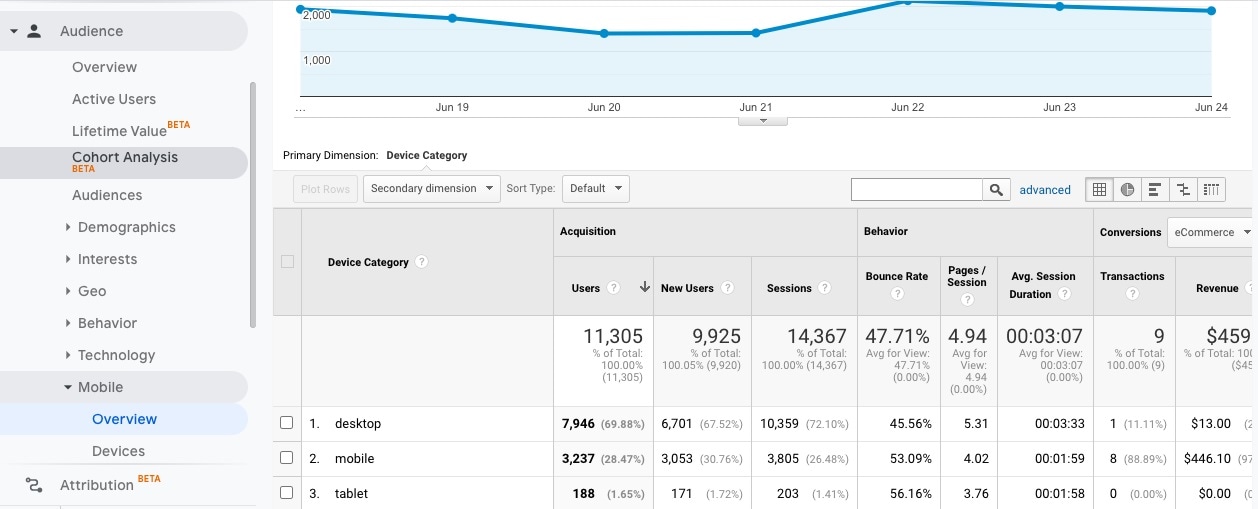
It is also valuable information if you run advertising as it will provide you with insights into your target audience and on what device they are consuming your media. This means you can focus your ads in the right feeds for conversions.
Acquisition
The acquisition portion of google ads helps marketers analyse their customers and the effectiveness of the marketing strategy.
Taking a detailed look at your acquisitions will give you an understanding into which types of audience your marketing plan have most resonated with and if this matches with your overall strategy.
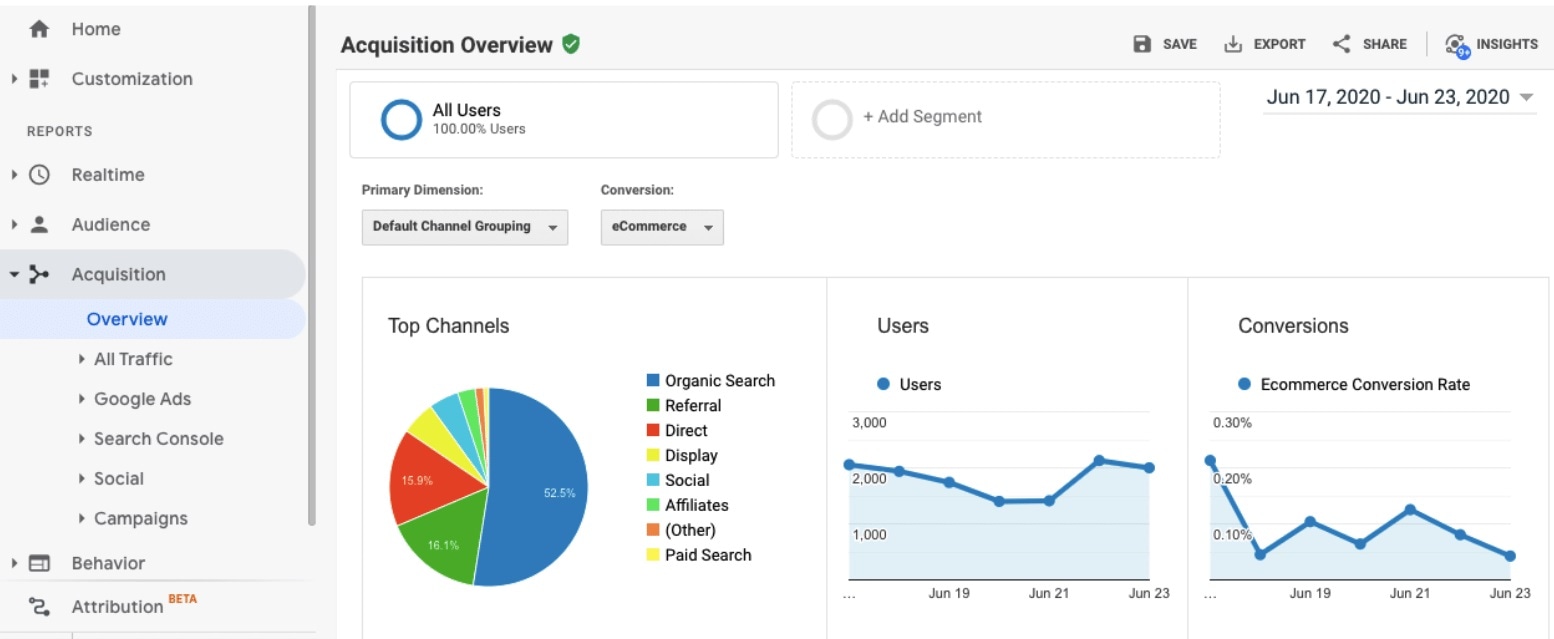
Traffic source
The channel grouping is broken down into 5 default areas and it is important to measure each regularly:
- Direct - this is when a user directly types your URL into their browser. This would indicate that the user has prior knowledge of your organisation and has learnt about your website from other media or traditional marketing channels.
- Organic - a user who has reached your website by typing a search query into a search engine.
- Referral - a user who has come to your website from a link on another area on the internet. It might be from a blogger or another industry site such as www.AZoM.com or www.New-medical.net who has referenced your website .
- Social - a user who has come to your site via a link on a social networking site, although this often requires manual setup as the social channel often uses other as default.
- Paid Search - a user who has come from a paid search or display camapign such as Google Ads.
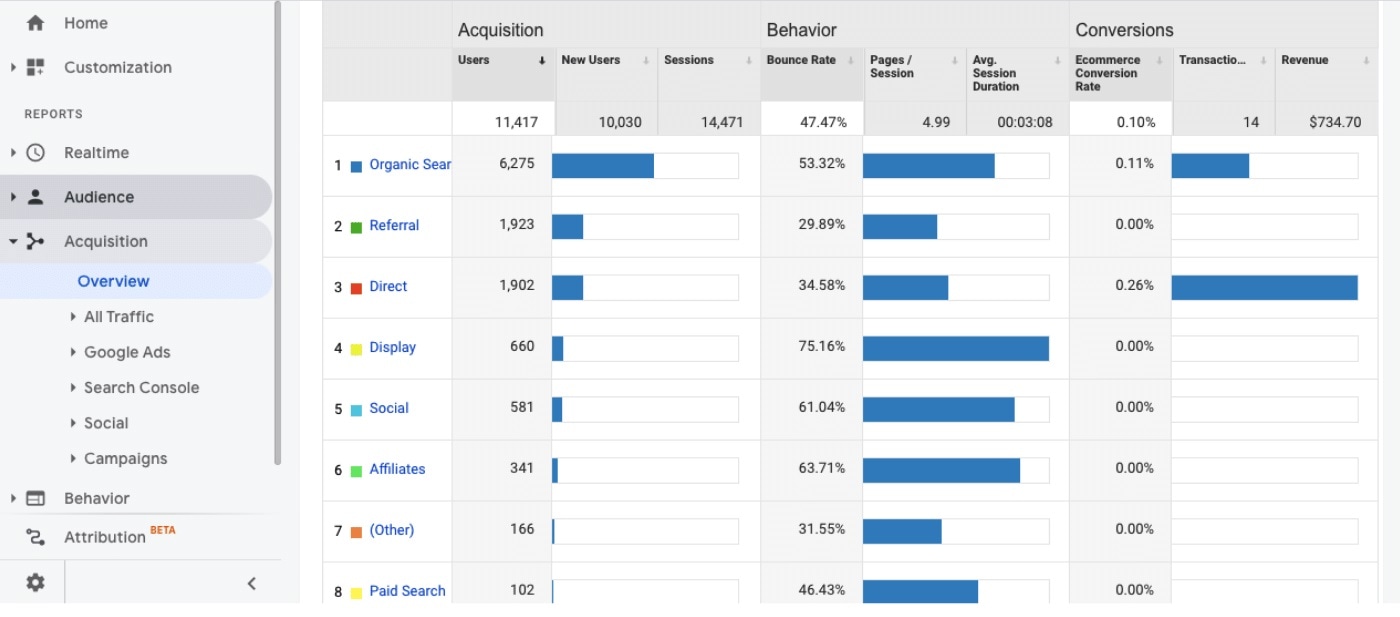
You may also see other areas in this section included paid search, display etc. if you include these tactics in your marketing strategy.
Behaviour
Monitoring your users' behaviour helps marketers to understand their customers behaviour and what content is having the biggest impact.
- Page views - total number of pages viewed
- Average time on page - average time users spend on a single page
- Bounce rate - this is the % of visitors who only visit a single page on your website
- Most popular page - the top performing pages on your site
- Pages per visit - the average number of pages your users visit when on your website.
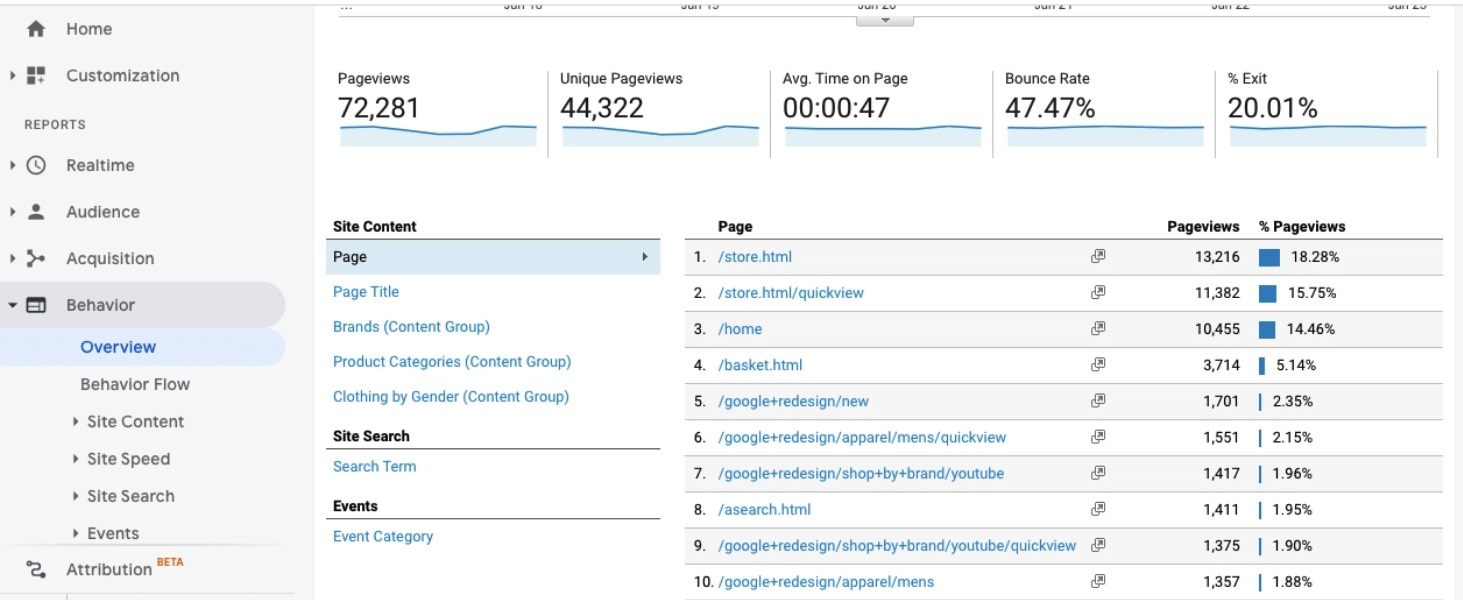
Why should you care about these metrics? Well, you gain insights into the content that is popular, how your users are engaging with your site and if the content provides them with a reason to stay on your site once they have landed there.
Monitoring what your most popular content is over a period of time can boost your content marketing efforts and fuel future ideas.
Conversion
You can start monitoring your conversions by setting up goals. Doing this will help you to analyse if your website and its content is helping you to meet your objectives.
Conversions can include things like: an enquiry, purchase, registration, download etc. Take a look at the video below to see how you can set up goals.
Goals
Measuring your conversions is an important step to take in understanding how effective your website is.
This video shows you how to set up a goal within Google Analytics that tracks new enquiries as a conversion. Setting this up will also enable you to analyse the customer journey from landing page through to these enquiries.
When someone has completed a goal, you can examine the journey they took on your site to get there. The screenshot below shows you where you can analyse the ‘goal flow’ (your website visitors customer journey).

Metrics make great KPIs
Using the above metrics is a great way for marketing managers to monitor the optimisation of their websites and marketing efforts. They also provide objective and measurable performance indicators you can set as KPIs for your teams and/or for specific marketing campaigns.
Conclusion
Measuring the above over a period of time can help the busy marketer better understand their audience, analyse the effectiveness of their marketing strategy and proving return on investment.
You can monitor them weekly, bi-weekly or monthly depending on your business circumstances. Remember to always align the key metrics with your marketing goals and overall business objectives.
It is key to measure these over a period of time so you can analyse consistently and amend your marketing based on the data that you are collecting.
Ask about Analytics
Taking analytics to the next level
Google analytics is a fantsatic free tool which, unsurprisingly, works very well when telling you how well you are spending money on Google Ads. However it has it's limitations by only showing you broad bigger picture data. Check out how AZoIntel gives you in-depth detail on your prospect and customer browsing behaviour.
AZoIntel from AZoNetwork on Vimeo.